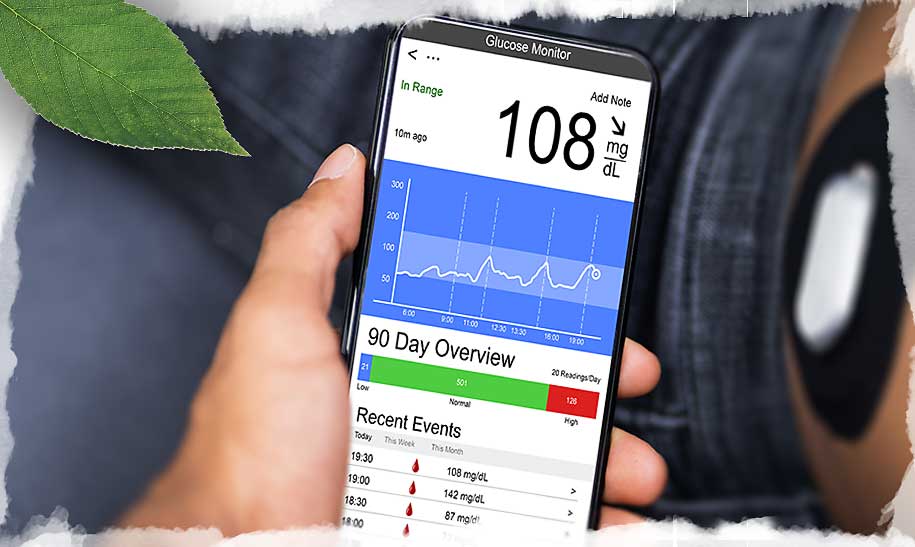Recently I wrote about continuous glucose monitors, advanced technology for measuring glucose levels. Now that we know how glucose is measured and the available data, it’s important to explore what constitutes a “normal” glucose level.
Continuous glucose monitors, advanced technology for measuring glucose levels.
The American Diabetes Association (ADA) classifies people into three categories: normal (less than 100 mg/dl), prediabetes (100-125 mg/dl) and diabetes (126 mg/dl or higher). These categories are based on measuring fasting blood glucose, or checking blood glucose levels after a patient has fasted at least eight hours prior to the test, with results based on a single moment in time. However, recent advances in continuous glucose monitors (CGM) allow patients and physicians the ability to track glucose levels over a period of 24 hours and study glycemic variability, or swings in glucose levels throughout the day.
While research is ongoing regarding healthy glucose levels for nondiabetic patients, use of the CGM has shown trends that suggest normal levels for a nondiabetic individual are as follows:
- Fasting glucose levels between 80-86 mg/dl
- Glucose levels between 70-120 mg/dl for approximately 90% of the day (rarely above 140 mg/dl or below 60 mg/dl)
- Mean 24-hour glucose levels of around 89-104 mg/dl
Blood Glucose Levels: Normal vs Optimal
Unfortunately, there may be an increased risk of health problems for non diabetic patients even when blood glucose levels are in the normal range, so it is important to strive beyond normal to optimal. The following are proposed optimal glucose ranges, based on an accumulation of studies detailed in a 2020 article about CGM and metabolic health.
- Fasting Glucose: 72-85 mg/dl
- Post-Meal: Less than 110 mg/dl, with less than a 30 mg/dl increase from pre-meal levels
- Mean 24-hour glucose: 79-100 mg/dl
Physicians recommend use of the CGM (Continuous Glucose Monitor) as a real-time tool to collect the data
It is common for glucose levels to increase after a meal. However, the goal is to prevent excessive spikes in glucose levels, as these are associated with heart disease, inflammation, blood vessel damage, increased risk of diabetes, weight gain and even higher cancer rates. Keeping glucose levels consistent is complicated, because each individual’s body can react dramatically differently to eating identical foods. Physicians recommend use of the CGM as a real-time tool to collect the data needed to choose your body’s most beneficial foods, as the technology can not only provide extensive figures, but can characterize an individual’s glucose response to specific foods and, in turn, predict their body’s responses.
Abnormal glucose levels are also concerning, as when the levels are too high the result is hyperglycemia, which can damage blood vessels and nerves over time and lead to problems with the kidneys, eyes and heart, as well as numbness in the hands and feet. When glucose levels are too low (below 70 mg/dl) we risk hypoglycemia, and the body may release epinephrine, or adrenaline, which can lead to heart issues, stroke, blurred vision, sweating, anxiety, confusion, seizures or even coma.
Healthy Glucose Regulated by CGM
Because we’re aware that even those with normal glucose levels may be at a higher risk for health problems due to elevated fasting glucose or frequent spikes and dips, it is important to maintain healthy glucose levels by keeping your blood glucose within the normal range (preferably at the low end), but also preventing too many variances. Exploring diet and lifestyle choices with your physician will help you to achieve these goals, and use of a continuous glucose monitor can help the patient and doctor work together to improve current and future health.


